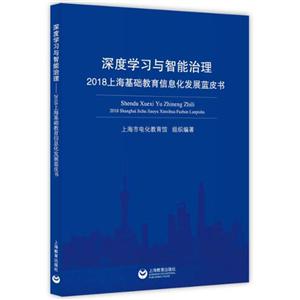汉语名词动用中的句法机制研究

|
汉语名词动用中的句法机制研究作者:程杰 开 本:32开 书号ISBN:9787030279286 定价:48.0 出版时间:2010-07-01 出版社:科学出版社 |
汉语名词动用中的句法机制研究 本书特色
《汉语名词动用中的句法机制研究》:教育部人文社会科学研究一般项目(08JC740010)广东省哲学社会科学“十一五”规划项目(08YK-01)资金资助
汉语名词动用中的句法机制研究 目录
序 Acknowledgements Abstract 摘要 Glossary Chapter 1 Introduction 1.1 Introduction 1.2 Denominal Verbs in Chinese 1.2.1 The Criteria 1.2.2 The Data 1.2.3 Semantic Properties of DNVs 1.3 Previous Approaches to DNVs 1.3.1 The Lexical/Morphological Approach 1.3.2 The Pragmatic Approach 1.3.3 The Lexical-semantic Approach 1.3.4 The Syntactic Approach 1.3.5 Summary 1.4 Rationale for This Research and Questions to Be Addressed 1.5 A Syntactic Approach to Chinese DNVs: An Overview Chapter 2 The V-bar Pied-piping Hypothesis 2.1 Introduction 2.2 The V-bar Pied-piping Hypothesis 2.2.1 Dative Shift Under Current Theories on Verb-related Movement 2.2.2 The V' Reanalysis Hypothesis 2.2.3 The V-bar Pied-piping Hypothesis 2.2.4 Licensing V-bar Pied-piping 2.3 Explaining Some (A)symmetries of Syntactic Domains 2.4 Explaining Some Natural Word Order Phenomena 2.4.1 Adjuncts 2.4.2 Verb Particles 2.4.3 Extraposition 2.4.4 Inversion 2.5 Deriving Compound Verbs in Chinese 2.5.1 Verb-Directional/-Phase Constructions in Chinese 2.5.2 Verb-Resultative Constructions in Chinese 2.5.3 Light Verb Constructions in Chinese 2.6 Summary Chapter 3 Semantic Light Categories in Chinese 3.1 Introduction 3.2 Light Verbs: Syntactic vs. Semantic 3.2.1 The Meanings of Light Verb 3.2.2 Light Verb v vs. Proto-verbs 3.2.3 Proto-verbs vs. Canonical Verbs 3.2.4 Auxiliary Verbs 3.3 Null Prepositions in Chinese 3.3.1 Variety and Unselectiveness of Verbal Objects 3.3.2 The Null Preposition Hypothesis 3.3.3 Some Consequences 3.4 Summary Chapter 4 Syntactic Derivation of DNVs 4.1 Introduction 4.2 Reclassifying DNVs in Chinese 4.2.1 Aspectual Classes of Verbs 4.2.2 Aspectual Classes of Chinese DNVs 4.3 Deriving DNVs via Syntax 4.3.1 Deriving Sta-DNVs 4.3.2 Deriving Ach-DNVs 4.3.3 Deriving Acc-DNVs 4.3.4 Deriving Act-DNVs 4.4 Summary Chapter 5 Syntax-Induced Properties of DNVs 5.1 Introduction 5.2 The Inter-Class Quantitative Asymmetry 5.3 The Inter-Categorical Asymmetry 5.4 The Pattern of Aspectual Shift with DNVs 5.4.1 State-to-Achievement Shift 5.4.2 Achievement-to-Accomplishment Shift 5.4.3 Accomplishment-to-Achievement Shift 5.4.4 Achievement-to-State Shift 5.4.5 Some Caveats 5.5 Accomplishment Verbs in Chinese 5.5.1 The Traditional View 5.5.2 Object-coerced Accomplishment Verbs 5.5.3 Syntactically-derived Accomplishment Verbs 5.6 Determination of the Aktionsart of DNVs 5.6.1 Definiteness of Objects 5.6.2 Boundedness of Objects 5.6.3 Boundedness of Source Nouns 5.6.4 Proto-verbs 5.7 Eventuality Structure of DNVs 5.7.1 The Singular-headedness of Sta- and Act-DNVs 5.7.2 The Double-headedness of Ach-DNVs 5.7.3 The Triple-headedness of Acc-DNVs 5.8 Semantic Generation of DNVs 5.8.1 The Basics of Generative Lexicon 5.8.2 Generating the Semantics of Sta-DNVs 5.8.3 Generating the Semantics of Ach-DNVs 5.8.4 Generating the Semantics of Acc-DNVs 5.8.5 Generating the Semantics of Act-DNVs 5.8.6 Functioning of Proto-verbs 5.9 Summary Chapter 6 A Comparative Perspective on DNVs 6.1 Introduction 6.2 Asymmetries Between Chinese and English DNVs 6.2.1 Quantitative Asymmetry 6.2.2 Typological Asymmetry 6.2.3 Aspectual Asymmetry 6.3 Potential Parametric Variations 6.3.1 Activity vs. Inertness of Null Preposition P 6.3.2 Prominence vs. Dormancy of Proto-verbs 6.3.3 Applicability of V-bar Pied-piping 6.4 The Account for the Asymmetries 6.4.1 Explaining the Quantitative Asymmetry 6.4.2 Explaining the Typological Asymmetry 6.4.3 Explaining the Aspectual Asymmetry 6.5 Summary Chapter 7 A Diachronic Perspective on Chinese DNVs 7.1 Introduction 7.2 Characteristics of Classical Chinese DNVs 7.3 Light Categories and V-bar Pied-piping in Classical Chinese 7.3.1 Null Prepositions in Classical Chinese Syntax 7.3.2 Proto-verbs in Classical Chinese Syntax 7.3.3 V-bar Pied-piping in Classical Chinese Syntax 7.3.4 Classical Chinese DNVs: A Paradox 7.4 A Minimalist Account 7.4.1 Patterns of Feature Bundling 7.4.2 Strength of Morphemes 7.4.3 The Account 7.5 The Extension of Light Categories from Syntax to Morphology 7.5.1 The Denominal Prefix *s- in Early Archaic Chinese 7.5.2 The Denominal Falling Tone in Middle Archaic Chinese 7.5.3 Denominal Light Categories in Modem Chinese 7.6 Summary Chapter 8 Concluding Remarks 8.1 Major Findings 8.2 Limitations Appendix References
社会科学 语言文字
在线阅读
- 最新内容
- 相关内容
- 网友推荐
- 图文推荐
零零教育社区:论坛热帖子
| [高考] 2022 西安电子科技大学《软件工程》大作业答案 (2022-04-25) |
| [家长教育] 孩子为什么会和父母感情疏离? (2019-07-14) |
| [教师分享] 给远方姐姐的一封信 (2018-11-07) |
| [教师分享] 伸缩门 (2018-11-07) |
| [教师分享] 回家乡 (2018-11-07) |
| [教师分享] 是风味也是人间 (2018-11-07) |
| [教师分享] 一句格言的启示 (2018-11-07) |
| [教师分享] 无规矩不成方圆 (2018-11-07) |
| [教师分享] 第十届全国教育名家论坛有感(二) (2018-11-07) |
| [教师分享] 贪玩的小狗 (2018-11-07) |






